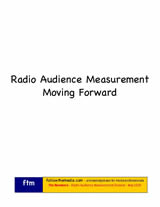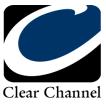
| The Numbers |
 |
followthemedia.com - a knowledge base for media professionals |
|
|
KNOWLEDGE
 Measuring radio audiences; includes electronic measurement systems and device descriptions, RAJAR (UK) debate, with comments. AGENDA
|
||
RAJAR Shows RAJAR WorksUpgrade and improve were the key words used by RAJAR (Radio Joint Audience Research) Managing Director Sally de la Bedoyere when announcing the long awaited new contract for UK radio measurement. Times are tough enough in the UK commercial radio industry without inflicting new trauma. RAJARs delicately prescribed measurement homeopathy provides a regimen for well-being, mental and physical.
Sally de la Bedoyere The new two-year RAJAR audience measurement contract, commencing in January 2007, retains Ipsos MORI for the diary-based collection – which remains the core measurement currency. The diary itself will be revised to collect data about platform usage; analogue, digital radio, digital TV and internet. Sampling, reporting and quality control will be sourced to RSMB Audience Research, long-time supplier to BARB, the UK TV research organization. BARB, itself, takes a small but significant role. The new contract includes a pilot panel in London measuring both radio and television with a passive device concurrent with the diary survey. TNS is supplying Arbitron’s Personal People Meters (PPM) as the collection device. RAJAR and BARB “insist” no joint radio and television measurement is on the horizon.
Arbitron’s glowing press releases aside the American company’s role is limited. And it wasn’t a matter of winning anything, made clear by RAJAR research director Paul Kennedy. Simply put, the PPM device is available now and RAJAR remains open to devices – and software – from other suppliers. And, this is only a test. GfK/Eurisko’s Media Monitor and Ipsos Smart Cell Phone remain under consideration. Welcome to all its’ constituents is RAJAR’s elegant management of complex angst. Commercial broadcasters needed consistency of the currency, an opening to passive measurement technology and no shock to the budget. Early cost estimates for a complete switch to passive, electronic measurement – long before the bottom fell out of the UK ad market – conservatively suggested a five-fold price increase. There will be a cost increase for commercial radio broadcasters, but RAJAR has kept it to about 12%. “It would be suicidal to move to a meter system now,” said Chrysalis Radio CEO Pat Riley at the press conference announcing the new contract. “In two years, who knows? We might be ready to go.” UK advertising people, only months ago sneering that radio measurement wasn’t keeping up with the times, seem to accept RAJAR’s initiative. “What we have currently is very robust, when you look at other media, and quite advanced,” offered media buyer Initiative Media’s Jonathan Barrowman, quoted in Media Guardian. “The rest of the world is looking at what we are doing in this area and Rajar is doing what they can.” Indeed, it seems RAJAR has done its job bringing reality – just a tiny bit – to the ad people. RAJAR makes no secret about the future of electronic measurement. There are many, many questions. Arbitron, for their part, has cut side deals with almost everybody standing…except most radio broadcasters. In January the company press release announced a deal with WPP and quoted MindShare Local Broadcast president Kathy Crawford saying it is “vital that the radio industry embrace electronic measurement before advertisers lose all faith.” She said WPP supports Arbitron because “they are the only option.” One never expects Americans to pay much attention to anything outside their limited boundaries. But Clear Channel, the nations biggest radio broadcaster, obviously has done their homework and discovered that other options are not only available but also ready to go. Again, we forgive the ad people: they know not what they are saying. 
Clear Channel’s head of research Jess Hanson started asking questions and brought on board many other US media research heads. What has been organized is field trials, similar to those conducted by RAJAR. Arbitron is now learning a diplomatic term: deferred hegemony. Joint industry committees (JICs) work well when organized around one central purpose. For RAJAR, that begins and ends with providing “gold standard” currency for radio audience measurement. All media researchers are grappling with the same issues as RAJAR: compliance, new platforms, passive versus active collection and cost. Broadcasters hesitating to form a JIC for audience measurement cede control of their currency to an individual supplier whose sole motivation, justifiably, is its own profitable performance. RAJAR, in taking control of its obligation, has proven again that it works and works very well. |
| copyright ©2004-2006 ftm partners, unless otherwise noted | Contact Us • Sponsor ftm |